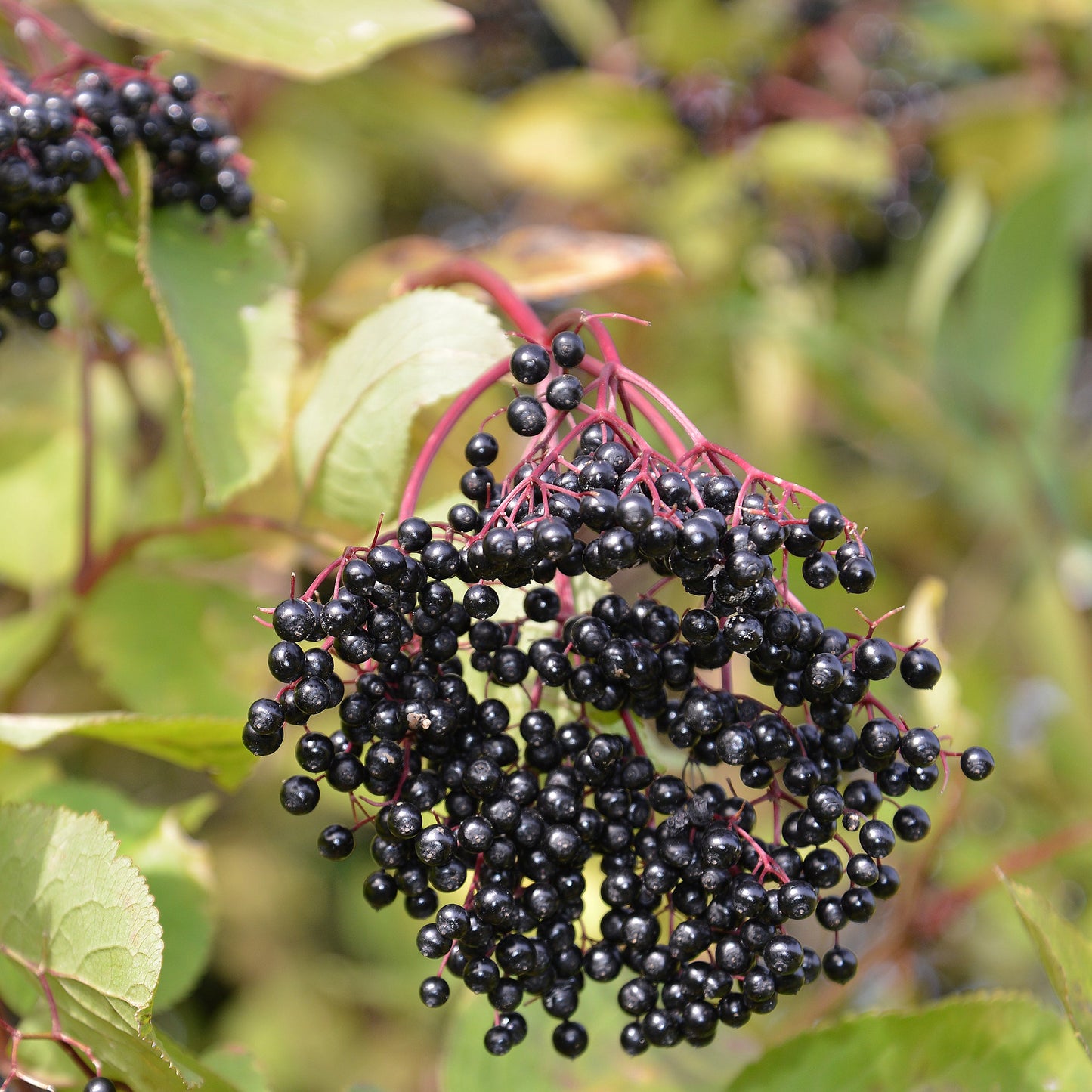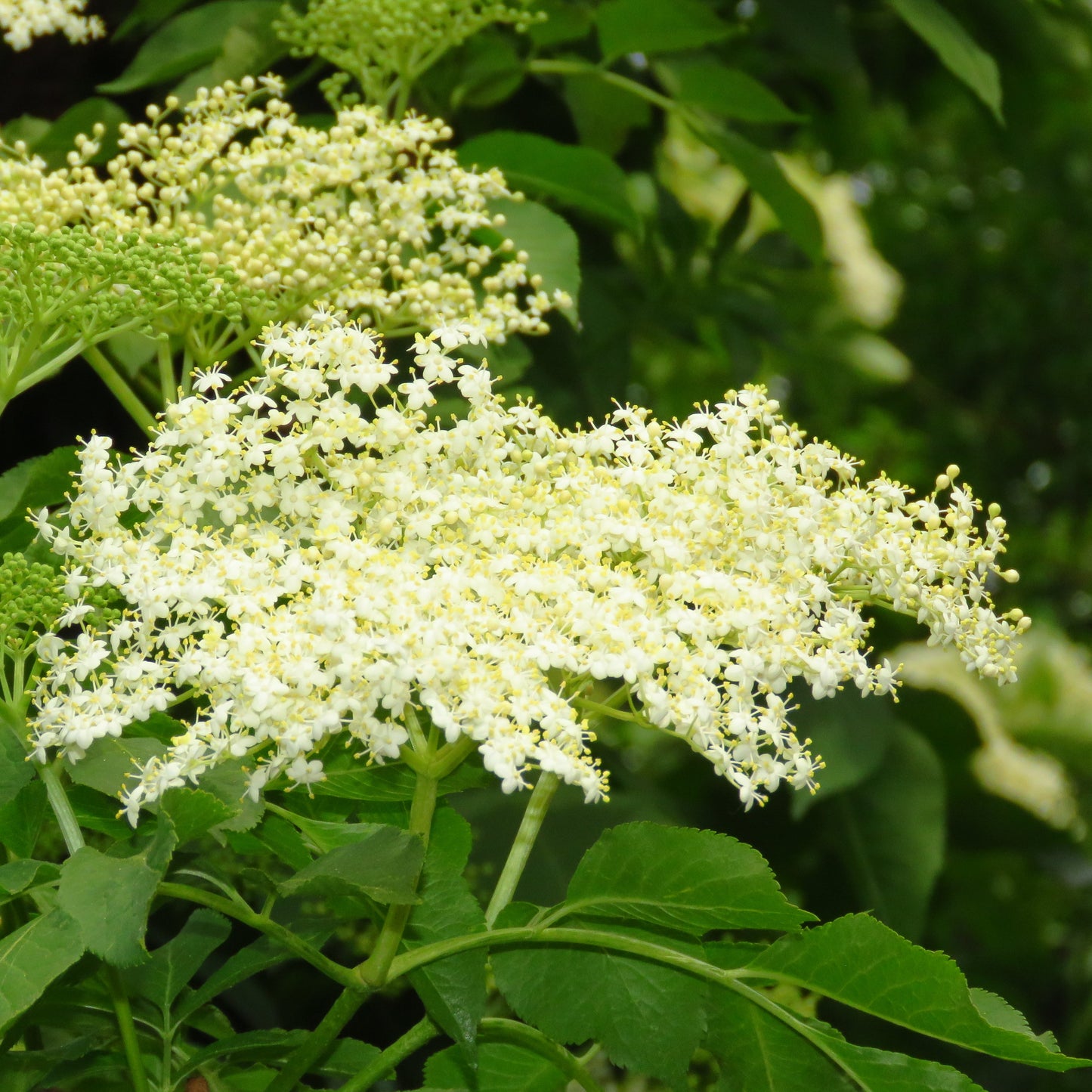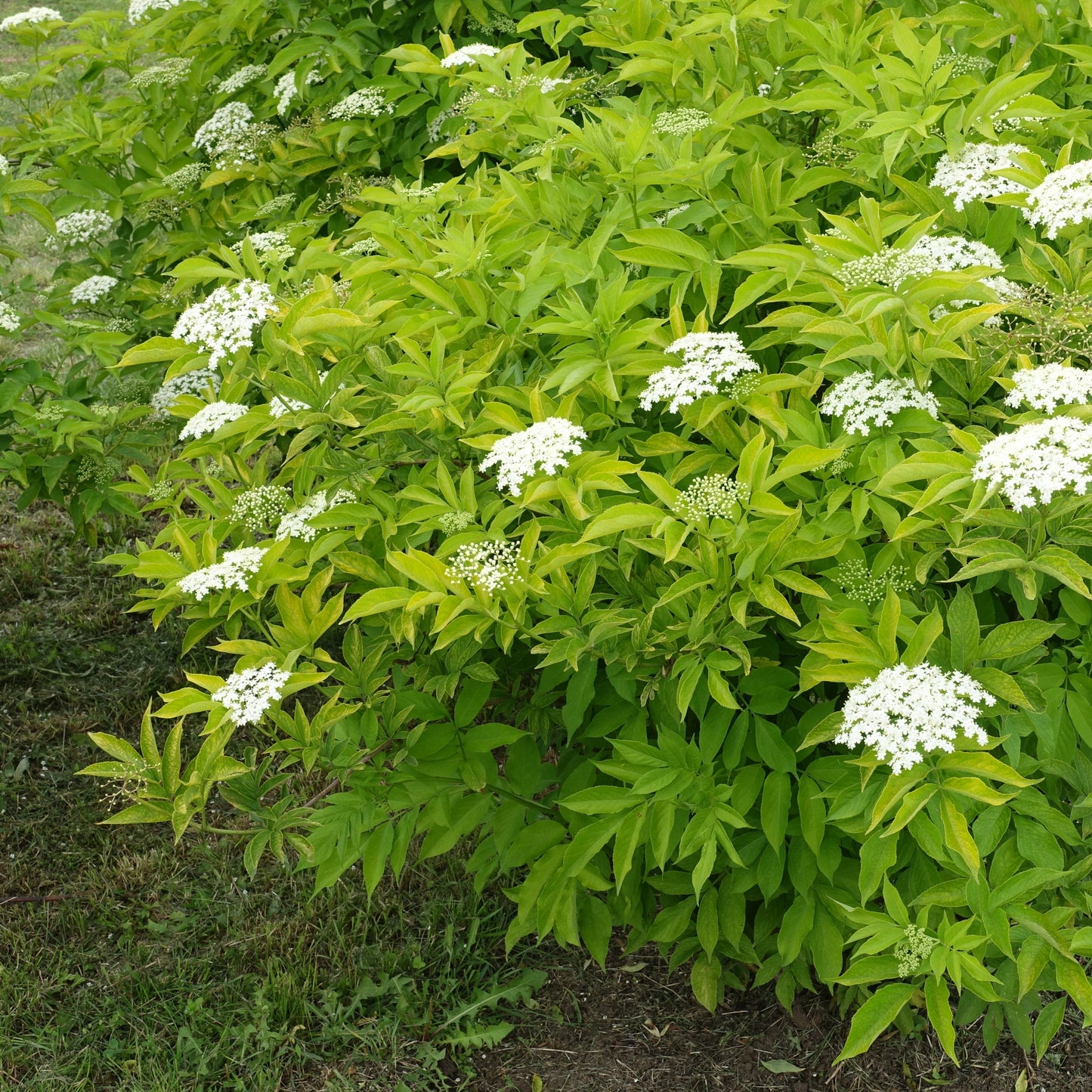Limited Quantities - Reserve Now For Fall
American Elderberry
American Elderberry
Couldn't load pickup availability
Sambucus canadensis
The Elderberry Bush is a fast-growing, multi-stemmed deciduous shrub known for its clusters of fragrant white flowers, nutrient-rich dark purple berries, and exceptional wildlife benefits. This hardy, easy-to-grow shrub thrives in various soil conditions and is an excellent addition to edible landscapes, wildlife gardens, and naturalized areas. The berries are prized for their medicinal and culinary uses, making elderberry a must-have for home gardeners, foragers, and herbalists.
Elderberry Bush
| Attribute | Details |
|---|---|
| Variety | Rooted |
| Botanical Name | Sambucus canadensis |
| Common Names | Elderberry, American Elder, Common Elder |
| Mature Height | 6-12 feet |
| Mature Width | 6-10 feet |
| Growth Rate | Fast (2-4 feet per year) |
| Lifespan | 20-50 years |
| USDA Hardiness Zones | 3-9 |
| Sun Preference | Full sun to partial shade |
| Soil Type | Well-drained, loamy, sandy, or clay soils |
| Soil pH | Slightly acidic to neutral (5.5-7.0) |
| Water Needs | Moderate to high; thrives in moist soils but can tolerate short droughts |
| Flowering Season | Late spring to early summer (May-July) |
| Flower Color | White, fragrant clusters |
| Fruit Ripening | Late summer to early fall (August-September) |
| Fruit Characteristics | Small, dark purple to black berries rich in antioxidants |
| Wildlife Attraction | Birds, bees, butterflies, deer, pollinators |
| Growth Habit | Multi-stemmed, spreading shrub |
| Self-Pollinating? | No, requires at least two varieties for cross-pollination |
| Chill Hours | 200-500 hours |
| Landscape Uses | Edible landscapes, wildlife gardens, erosion control, hedgerows, windbreaks |
| Maintenance Level | Low |
Environmental Benefits
🐝 Pollinator & Wildlife Support – Produces nectar-rich flowers that attract bees, butterflies, and hummingbirds, while its berries provide a crucial food source for birds and small mammals.
🌱 Erosion Control & Soil Stabilization – Thrives in moist, flood-prone, and erosion-prone areas, making it ideal for stabilizing riverbanks and slopes.
🌎 Carbon Sequestration & Air Purification – Absorbs carbon dioxide and filters airborne pollutants, contributing to a healthier environment.
💧 Drought & Wetland Adaptability – Once established, it tolerates both wet and dry conditions, making it versatile for different landscapes.
Pros & Cons
| Pros | Cons |
|---|---|
| Fast-growing and easy to establish | Requires two or more plants for best fruit production |
| Produces highly nutritious, antioxidant-rich berries | Raw berries must be cooked before consumption, as they can be mildly toxic |
| Attracts pollinators and supports biodiversity | Can spread aggressively through suckering if not maintained |
| Tolerant of wet and dry conditions | May require pruning to maintain shape and encourage fruiting |
| Beautiful spring flowers and fall fruiting | Berries are highly attractive to birds, requiring netting for harvest |
Planting & Care Guide
- Spacing: Plant 6-10 feet apart for full coverage and cross-pollination
- Soaking: Soak roots in water for 6-12 hours before planting
- Planting Depth: Dig a hole twice the width of the root system, ensuring roots are level with the soil surface
- Mulching: Apply a 2-3 inch layer of mulch to retain moisture and suppress weeds
- Pruning: Prune in late winter or early spring to encourage new growth and maintain shape
- Fertilization: Apply a balanced fertilizer in early spring to support healthy growth and fruit production
- Watering: Water regularly, keeping soil evenly moist but not waterlogged
The Elderberry Bush is a versatile, fast-growing shrub that provides nutritious fruit, pollinator support, and ornamental beauty. Whether planted for home fruit production, wildlife habitat, or erosion control, this hardy and low-maintenance shrub is an excellent addition to any landscape.
Share






